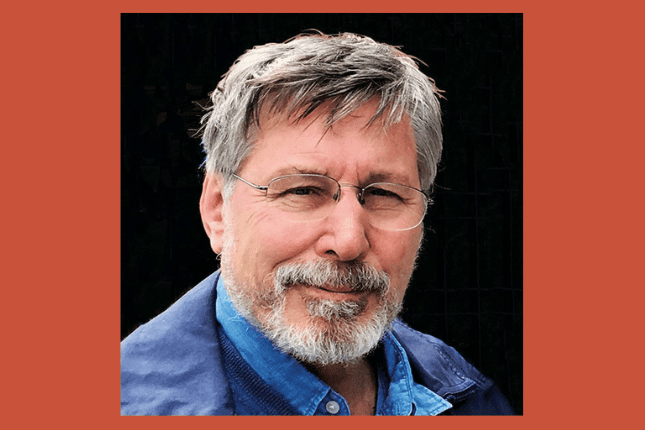As therapists, we inhabit a professional culture that stresses the importance of being accommodating, tactful, nonconfrontational. It’s part of our job description to get along with people, play well with others, and not rock the boat. Nevertheless, there are times when a therapist with a sufficient sense of mission who genuinely cares about underserved clients needs to stop worrying about rubbing some people—particularly the powers that be—the wrong way.
On one level, Bessel van der Kolk looks and sounds like one of the powers that be. Not only is he a classically trained psychodynamic psychiatrist who underwent his own analysis, he even looks and sounds a bit as if he could have been in Freud’s inner circle. Medical director of The Trauma Center in Boston, professor of psychiatry at Boston University Medical School, and director of the National Center for Child Traumatic Stress Complex Trauma Network, he perfectly embodies the role of Big Cheese in psychotherapy circles. And yet, fundamentally, he’s a rebel—or perhaps a knight-errant would be a better term—who fights on behalf of traumatized people, fervently committed to bringing them the best treatment possible and not afraid to offend the therapeutic establishment in the process.
For the past 30 years, he’s been instrumental in bringing the insights of neuroscience into our understanding of trauma, and was the first “establishment” psychiatrist to publicly champion a range of unconventional mind–body approaches—including yoga, mindfulness, eye movement desensitization and reprocessing (EMDR), neurofeedback, sensorimotor therapy, martial arts, and theater—in treating trauma. He’s used his privileged position within academic circles to get the funding for research projects to establish the scientific legitimacy of approaches once considered on the fringe of mainstream acceptance. By any measure, he’s a pioneer in the field. In this conversation, he shared his thoughts on the differences between public and private trauma, the vital importance of community healing, and the often unacknowledged role of gentleness in our approaches to healing work.
—–
RH: How are the public traumas we read about in the news—events like school shootings or the Boston Marathon bombings—different from the far more private traumas psychotherapists typically treat?
Van der Kolk: With public traumas, everybody gathers around you, and there’s a lot of comfort and the acknowledgement of the reality of what happened. That’s very different from a private trauma that involves assault, incest, rape, or domestic violence. Those are hidden traumas, in which victims rarely get to publicly acknowledge what took place and rarely get the support they need to move on in their lives. When they have a community that rallies around them, the victims of public traumas tend to do much better. Too often, victims of private trauma end up with a deep sense of shame and invisibility, along with silent rage about not being seen or protected.
RH: Is the brain’s processing of the traumatic incident different as well?
Van der Kolk: Well, the mind certainly processes it differently, and I suspect the brain does as well. But we’re not yet at the point of getting funding to study how this sense of secrecy, isolation, and shame shows up in the brain and its neural networks. The basic orientation in trauma research is still car accidents and soldiers, not incest, child abuse, or domestic violence, which are more difficult to study.
RH: I know you’ve been researching the relationship between early childhood trauma and borderline personality. What have you found?
Van der Kolk: In our data, we looked at 125 people with borderline personality disorder, and 87 percent of them had severe childhood abuse. In fact, we found that the earlier the trauma occurs, the more impact it has on the developing mind and brain. Further, if the trauma is meted out by caregivers, it has an even more pervasive impact on the children’s relationships with the people around them. Borderline personality is usually related to that survival strategy, but not always. That’s the important thing.
The longer you do this work, the more you realize black-and-white thinking doesn’t apply. One person’s central nervous system may interpret something as frightening, whereas another person may interpret it entirely differently. It’s not simply the intensity of the event, but the person’s response to it that determines the degree of trauma. A lot of factors are at play, primarily those involving the security of the environment—not only with children, but with adults too. Generally people who live in deeply caring and accepting environments handle potentially traumatic events much better than those who live in harsher environments. That’s why military combat units foster such a sense of loyalty and love. The training in the Marine Corps makes sure of that. These guys really love and care about each other. That’s what makes it possible for them to do all the difficult stuff they do.
RH: What about the research that seems to show that processing trauma immediately after it happens isn’t beneficial?
Van der Kolk: Well, it’s tricky. The way I interpret that research is that, while bonding after the trauma can be very useful, having people break down in front of each other may be destructive. It’s a double-edged sword. Helping people feel a connection to other people after a trauma is helpful, but triggering memories of horrendous things is not.
RH: To avoid the triggers, would they be better off speaking to people who weren’t involved with the trauma?
Van der Kolk: No, I don’t think so. Because when you’re with people who’ve been through the same experiences you do feel understood and accepted. So I think being with other survivors is extremely important. But watching a football game with your fellow survivors may be more helpful than telling each other what you saw when this kid was blown up. There’s still so much we don’t understand, but it also seems like dreaming and sleeping have a lot to do with how the brain naturally processes traumatic memories. That may be the primary function of dreaming—to integrate the pain and sorrow of each day into a larger memory store. If people can sleep, they can probably activate the brain’s natural healing mechanisms. But if they rile each other up—or you rile your patients up—it may actually interfere with that natural process. But we’re still not sure that it’s true.
RH: I’ve worked with some adult clients who experienced trauma as children and now have difficulty remembering not just the traumatic events, but their entire childhood. Is that common?
Van der Kolk: That’s a complex issue. Often people don’t remember because the content is too painful. Their animal brains keep reacting to their present environment as if they were in the past. Shutting off memory doesn’t keep a person’s body from continuing to respond to their environment as if they’re still in danger, even though their minds block the danger they’re fighting against. The job is to help them see what they’re fighting against and help them to feel like it’s safe now and the past is the past.
RH: You suggest interventions like yoga or EMDR so clients can feel relaxed and be better able to experience the memories.
Van der Kolk: In instances when people don’t have memories, they need to first feel fundamentally that their body is safe. Massage, yoga, and physical activity can all give their bodies a sense that they’re safe and okay. It lets them think, “I can tolerate being with myself.” The work begins in the basement of self-regulation, so people don’t feel scared of everything that happens inside of them. But helping people feel alive like this must be done very gently.
RH: What does the common therapist need to know about working with trauma?
Van der Kolk: My operative sentence is a line from W.H. Auden: “Truth, like love and sleep, resents approaches that are too intense.” So at first you need to go very gently via somatic sensations. You need to bear in mind that trauma is not the story of something that happened back then—it’s the current imprint of that pain, horror, and fear living inside people. Trauma isn’t something that lives outside clients. The job for therapists is to help them feel safe inside themselves.
Ryan Howes
Ryan Howes, Ph.D., ABPP is a Pasadena, California-based psychologist, musician, and author of the “Mental Health Journal for Men.” Learn more at ryanhowes.net.













